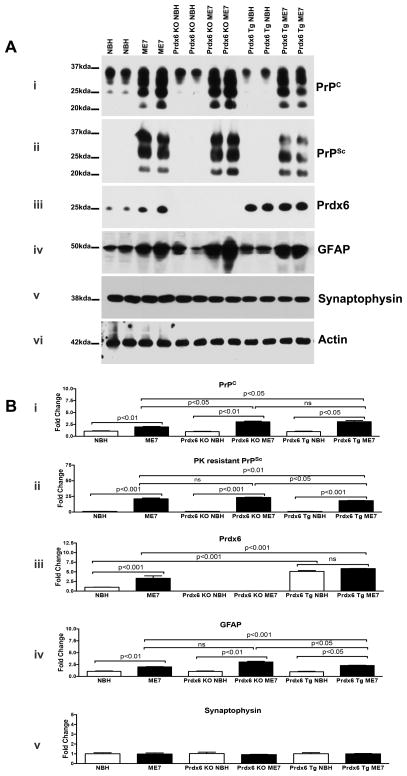Figure 4.
Representative western blots showing change in prion related biochemistry representative of n=6 per group. We observed a significant increase in PrP immunoreactivity (IR) (PrPC/PrPSc) as detected by anti-PrP 6D11 mAb in nonTg, Prdx6 KO and Prdx6 Tg-ME7 compared to NBH-animals at the time point analysed (A; panel i and B; graph i). There was significantly less accumulated PK resistant PrPSc in Prdx6 Tg ME7-animals compared to Prdx6 KO-ME7-animals (A, panel ii; B, graph ii; p<0.05), but there was no significant difference in the PrPSc IR in nonTg-ME7 compared to Prdx6 KO-ME7. There was no Prdx6 expression in the cohorts of Prdx6 KO animals used (A, panel iii; B, graph iii). There was robust expression of Prdx6 protein in both Prdx6 Tg NBH- and Prdx6 Tg ME7-animals but the levels were not significantly different (A, panel iii; B, graph iii;), but the levels were significantly different from expression in nonTg animals (p<0.001, respectively).
GFAP IR was significantly increased in all ME7-animals, but there was significantly less in Prdx6 Tg ME7-animals compared Prdx6 KO ME7-animals (A, panel iv; B, graph iv; p<0.001).
Synaptophysin was not markedly decreased in either cohort of animals (A, panel v; B, graph v). Statistics are based on One-way analysis of variance with Newman-Keuls Multiple Comparison Test.

